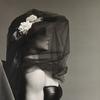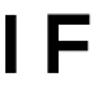A Telling Instinct: John James Audubon & Contemporary Art
- ASHEVILLE, North Carolina
- /
- January 12, 2020
A Telling Instinct: John James Audubon & Contemporary Art is on view February 21–May 4, 2020 at the Asheville Art Museum in Asheville, NC.
John James Audubon’s lifelong obsession to record the natural world, which he found in his adopted homeland of the United States, resulted in two inspired projects - Birds of America (1827—1838) and The Viviparous Quadrupeds of North America (1843—1848). These compendiums wedded art and science, and presented two of the great artistic accomplishments of the first half of the nineteenth century.
During his own lifetime Audubon was acclaimed for his technical abilities and for his undaunted passion for presenting and preserving the uniqueness of the American environment through these major portfolio projects, a deserved acknowledgment that continues still to this day.
Though Audubon was far from the first to produce such illustrations of the natural environment, a key difference between his work and that of Alexander Wilson’s American Ornithology (1808-1814), was his ability to imbue his subjects with character and personality, strengths and weaknesses. Throughout his animal imagery here lied upon a strong moral narrative that generated empathy and recognition in the viewer. This made Audubon’s depictions much more than accurate reproductions from nature. His use of theatrics was intended to help the viewer identify with the subject, a point all the more apparent when one reads his writings alongside this imagery.
Audubon was known to carry with him a copyof a favorite French classic, The Fables of Jean de La Fontaine (first published in 1668) which reinterpreted Aesop’s fables by constructing the natural world into chronicles of good and evil. Storytelling was not only an important part of Audubon’s artwork, it permeated his very persona as he self-consciously presented himself as the quintessential American frontiersman both in the U.S. and abroad to further his popularity and projects.
A selection of artists that choose to continue this tradition of animal allegories and metaphor stakes on entirely new meanings and intentions in the 21st century. In a world of climate change and deforestation, increased urbanization and technology, the ongoing threat of species extinction and sustainability as well as social issues of gender, race, sexuality, terrorism, immigration and education-our stories may have changed but our need to find meaningful and understandable ways to express our fears, and concerns, through storytelling has not.
Addressing the foibles and strengths that will always be part of the human condition can be made more palatable when told through the guise of the creatures that share our planet. How these artists make use of this construct of narrative in our own time is compelling and powerful as well as instructive. In these portraits of beasts and beings we often see reflections of our own instinctual selves.
Visit ashevilleart.org for details.

100x100_c.jpg)






![Peter Paul Rubens (Flemish, 1577–1640), After Titian (Tiziano Vecelli) (Italian [Venetian], c. 1488–1576), Rape of Europa, 1628–29. Oil on canvas, 71 7/8 x 79 3/8 in. Peter Paul Rubens (Flemish, 1577–1640), After Titian (Tiziano Vecelli) (Italian [Venetian], c. 1488–1576), Rape of Europa, 1628–29. Oil on canvas, 71 7/8 x 79 3/8 in.](/images/c/e2/2e/Jan20_Rape_of_Europa100x100_c.jpg)







